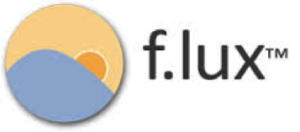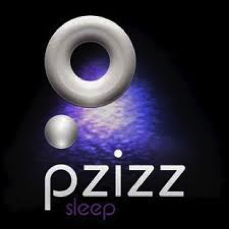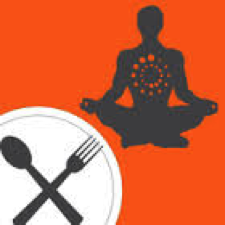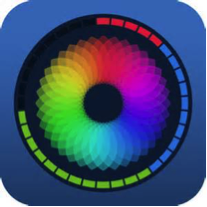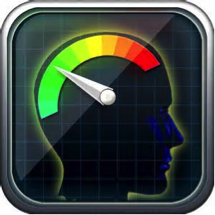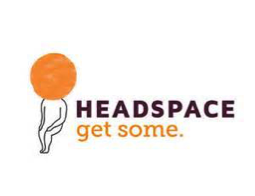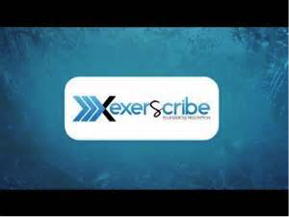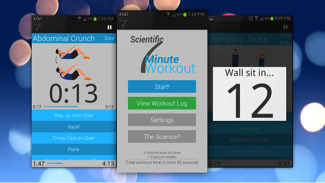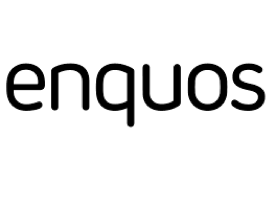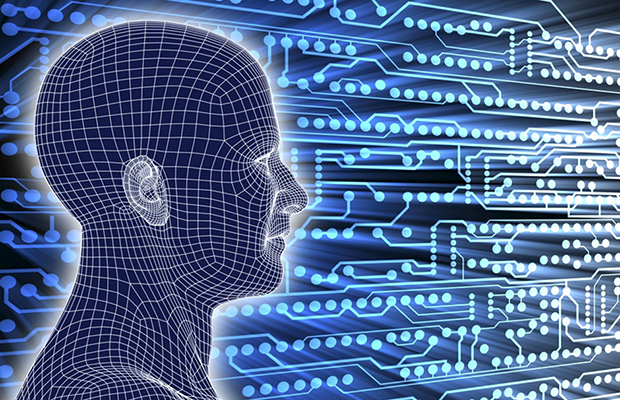
The market for self-quantification really exploded this year, which means there are loads more biohacking apps than you could ever dream of. Some are great, while others are crappy and a huge waste of your time.
These biohacker apps and web tools can help you quantify or improve just about anything you can think of: logging your food, tracking your sleep, managing your stress, and upgrading your brain.
So what are the best biohacking apps out there?
Here are some of the best ones I’ve found so far. Some of my favorites below, like Quantified Mind, even let you test which smart drugs work best for you – and Bulletproof Coffee too, for that matter.
Two of them I designed specifically to help you measure, understand, and then improve your body’s response to what you do and eat: Stress Detective and Food Detective on iOS or Food Detective on Android. The rest are ones I use if not every day, pretty often. Happy biohacking!
Brain Training and Self-Quantification To Test Effects of Smart Drugs
This app was developed by a researcher of Artificial Intelligence at Google, an educational website developer, and the Director of Stanford University’s Center for Advanced Study in the Behavioral Sciences. It uses scientific tests to measure the effects on your brain of different behaviors such as taking smart drugs, drinking coffee, meditating, etc. The app’s tests are based on tests1 used by real psychologists to measure your cognitive abilities including memory, reaction time, motor function, and executive function. And don’t worry that you’ll learn to “beat” these tests with frequent use – the tests are designed to be repeatable so that even after taking the tests multiple times, your performance won’t increase because of the repetition.
Peak:
Peak is a brain-training app that has 21 adaptive games to help you build your memory, focus, problem solving and other cognitive skills while having fun. The app measures your performance on games and suggests personalized brain workouts based on your goals to increase your skill set. It also keeps a history of your scores so that you can monitor changes in your performance over time. Peak was designed by neuroscientists, cognitive psychologists, gaming researchers, and education experts.
Lumosity has adapted cognitive ability tests into more than 40 games to help you train a variety of skills. It has personalized training recommendations, tests to help you measure your performance, and statistics to let you compare your results to those of others. The app was developed by neuroscientists and is based on the principles of neuroplasticity. There have been multiple studies confirming Lumosity’s benefits for people of all ages as well as with various medical issues. 2
Unlike with Peak and Lumosity, where you compete against yourself, in BrainWars you compete against other people to increase your mental abilities. You can compete against strangers from across the world, or challenge people you know to play real-time contests. However, whereas Peak and Lumosity train multiple skills, BrainWars focuses specifically on improving your concentration.
Sleep Monitoring and Hacking
We all know by now how important sleep quality is – but you can’t just try this and that and hope to know what worked. Instead, experiment with new sleep hacks one at a time, and then track your sleep quality each night with one of the following apps to be able to measure the difference.
When you wake up during the lightest part of your sleep cycle, you are likely to feel more rested throughout your entire day than if you had woken up during the deepest part of your sleep. With the Sleep Cycle app, you set a 30-minute alarm window and the app monitors your movement to determine where you are in your sleep cycle to ensure that you wake up during the lightest part of your sleep so that you feel as rested as possible during your day. 3
No one realistically expects people to stop using their computers when it’s dark outside. So the biohacker’s response to this unfortunate situation is to use a circadian screen adjustment app like f.lux. Available for both your phone and your computer screen, f.lux controls your screen and reduces blue light colors after the sun goes down. It is virtually unnoticeable when you’re using your computer, but it helps your body know when it’s time to go to bed.
Researchers have determined that any bright lights at night can disrupt the sleep hormone melatonin, and that blue light is the most harmful – a recent study even found that reading on your iPad before bed is worse than reading an old fashioned book. [4] Worse, disruption of melatonin can contribute to obesity and cardiovascular disease as well. By making a small change to reduce the amount of bright white and blue light that goes into your eyes before bed, you can improve your health and overall quality of life.
If you need to help settle your brain to optimize your sleep, try Pzizz. You can choose either sleep or power nap, and set the amount of time you want to sleep for. Then just plug your headphones into your phone and start the app, which will play a unique soundtrack of music, vocal cues (inspired by Neuro-linguistic Programming, 4 which suggests that language patterns can reprogram the brain), and binaural beats, 5 which can actually change your brain waves to help relax you.
Food Sensitivities
Bulletproof Food Detective iOS App and Android App:
Food Detective allows you to use your phone both to find food sensitivities and to pace yourself with relaxing breaths. When you eat foods to which you have sensitivities, your heart rate increases.6 Food Detective uses either your phone’s camera sensor or a heart monitor to check your pulse after eating so that you can see whether your heart rate increases. When you use the app to pace your breaths, it prompts you when to inhale and exhale to calm your nervous system.
Stress Management
Unless you’re brand new to the Bulletproof Executive, you’ve heard me talk about the importance of heart rate variability training before. Heart Math, and Inner Balance is a great app to help you practice it. It requires the Inner Balance sensor, which plugs into your phone and connects to your earlobe to monitor your heart rate. As the app measures your heart rate, it coaches your breathing to alter your heart rate, thereby helping to eliminate stress and fatigue and to improve focus.7
Bulletproof Stress Detective integrates and correlates data from popular fitness platforms like MapMyFitness, Fitbit and Withings and integrates seamlessly with the extensive biometrics from the new state-of-the-art HealthPatch sensor. With Bulletproof Stress Detective, you can see your stress levels in real time, giving you the ability to take action to reduce stress. If your chosen stress threshold is reached, Bulletproof Stress Detective’s Relax screen prompts you with a deep breathing screen that includes calming images. With the HealthPatch, additional metrics such as number of steps, calories burned, temperature, respiration and activity are measured in real time.
Balanced is an app that was developed to help motivate you and keep you focused on what matters. The app allows you to schedule and prioritize your tasks, gives you positive feedback when you complete yours tasks, keeps track of when you last did a particular activity, and even suggests more than 50 positive activities you can do to increase your happiness and productivity.
Like Food Detective, Stress Check uses your phone’s camera to measure your heart rate so that you can estimate your level of stress (since as your stress level increases, so does your heart rate – that’s why you get that pounding feeling in your chest when you’re seriously stressed about something). Stress Check also analyzes your heart rate variability (the amount of time between heartbeats, which becomes more erratic as your become more stressed)8 to give you an accurate reading of your stress level. And the more you use the app, the more it becomes accustomed to your heart rate variability, so the more accurately it assesses your stress level.
OmVana is an app that can be used for meditation, but also to improve your sleep, focus, and mood. It has over 500 inspirational audio tracks that relate to all aspects of your life – happiness, health, relationships, lifestyle, etc. – and come in various forms, such as guided meditations, inspirational speeches, and binaural beats5 (also used in Pzizz).
HeadSpace is a meditation coaching app. First, it teaches you how to meditate in 10 minutes per day over the course of 10 days. After you learn how to meditate, you can choose from hundreds of guided and unguided meditations of various lengths so that you can meditate whenever you need, however you need.
Money Management
This isn’t talked about much in the biohacker space, but money is important, if not the “be all, end all” of happiness. Rather than being the end goal, maintaining your ‘financial fitness’ is a means to allow you to be able to experiment, able to eat better, and able to achieve your bigger goals in life.
Level:
Level is a budgeting app to help you get from your current financial state to where you want to be. It breaks down your income, bills, savings, and daily and monthly spendable amounts while keeping track of your purchases through your credit cards and bank accounts to keep your financial picture as up-to-date as possible. (Level shut down on September 1 2017 but here is a link to the 7 best budget apps for 2021, these apps are just as good as level!)
Exercise and Fitness
Unsure of what to do when you walk into the gym? Exerscribe can fix that. The app tells you what to do for your workout, but it’s not created randomly – instead, each month your workouts have a specific emphasis and the workouts that month will gradually progress to build your fitness in the area being emphasized. You can also choose 2, 3, or 4+ day per week workout programs. And if an exercise isn’t quite right for you, you can choose a more or less advanced version or even an alternative (if, say, your gym doesn’t have the machine that exercise requires). Basically, it’s as close as you can get to a personal trainer without having someone stare at you for every rep.
The New York Times’ Scientific 7-Minute Workout:
In 2014, the fitness community was abuzz with talk about high intensity exercise – where you could get a full workout in barely any time at all by using scientifically proven9 high intensity methods. And to top it off, the exercises require nothing more than your body, a chair, and a wall. The app leads you through 12 exercises that you perform intensely for 30 seconds each with 10 seconds rest between each exercise so you can get a full workout in any time, anywhere.
Productivity
ATracker is the ultimate way to manage your time and make sure that you’re using it as productively as possible. You can keep tabs on how much time you spend on your daily routine, on parenting, housekeeping, hobbies, exercise, and work (or anything else you desire) and at the end of the day, get a breakdown of how you spent your day – in either pie chart, calendar format, or bar chart. Once you have that information, you can use it to rethink how you budget and organize your time so that you maximize your productivity.
Tracking All Of The Above!
If you use different apps to track your nutrition, sleep, workouts, and health, you can save yourself tons of time (and space on your phone) by consolidating all of those measurements in this one app, which allows you to track 23 different aspects of your life that are related to health. And, since you have all of this information in one place, it’s easier to see patterns between these different areas. And, if you want to save even more time, there are pre-made meal plans and shopping lists you can consult for various diets – vegetarian, Paleo, gluten-free, etc.
What other apps do you love? How else have you easily quantified or tracked the success of your self-experimentation?
Read More:
- All Bulletproof articles about Biohacking
- How The Bulletproof Food Detective app (formerly ‘Food Sense’) works
References:
[expand title=”Click to read the complete list of references.” swaptitle=”Click to hide references.”]
- http://www.quantified-mind.com/science (see References section)
- http://www.lumosity.com/hcp/research/completed
- Akerstedt T, Billiard M, Bonnet M, Ficca G, Garma L, Mariotti M, Salzarulo P, Schulz H. “Awakening From Sleep.” Sleep Med Rev 6.4 (2002): 267-86.
- https://justgetflux.com/news/2014/12/22/study.html
- Witkowski, Tomasz. “A Review or Research Findings on Neuro-Linguistic Programming.” Scientific Review of Mental Health Practice1 (2012): 29-40.
- Abein V, Kleinert J, Struder HK, Schneider S. “Brainwave Entrainment for Better Sleep and Post-Sleep State of Young Elite Soccer Players – a Pilot Study.” Eur J Sport Sci5 (2014): 393-402.
- Sajadieh A, Nielsen OW, Rasmussen V, Hein HO, Abedini S, Hansen JF. “Increased Heart Rate and Reduced Heart-Rate Variability are Associated with Subclinical Inflammation in Middle-Aged and Elderly Subjects with no Apparent Heart Disease.” Eur Heart J5 (2004): 363-70.
- Edwards, Stephen. “Evaluation of Heart Rhythm Coherence Feedback Training on Physiological and Psychological Variables.” South African Journal of Psychology 20IX10 (2013): 1-10.
- McDuff D, Gontarek S, Picard R. “Remote Measurement of Cognitive Stress via Heart Rate Variability.” Conf Proc IEEE Eng Med Biol Soc 2014 Aug.
- Klika, Brett, Jordan, Chris. “High-Intensity Circuit Training Using Body Weight: Maximum Results With Minimal Effort.” ACSM’s Health and Fitness J3 (2013) 8-13.
- DiNubile, Nicholas, Westcott, Wayne, Reinl, Gary, Bajaj, Anish, Braverman, Eric, Madigan, Margaret, Giordano, John, Blum, Kenneth. “The MarcPro Device is a Novel Paradigm Shift in Muscle Conditioning, Recovery and Performance: Induction of Nitric Oxide (NO) Dependent Enhanced Microcirculation Coupled with Angiogenesis Mechanisms.” J of Exercise Physiology5 (2011) 10-19.
[/expand]





